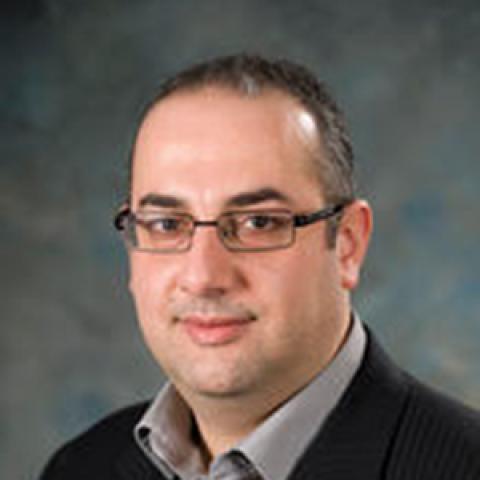Sunday's bloody attack on Coptic demonstrators left some 25 Christians dead and hundreds wounded. It also left foreign observers confused, as was reflected in a very disturbing White House statement.
There were three separate scenes that took place in Cairo's streets that, while related, must be analyzed separately if one wants to understand current Egyptian realities.
The first is the Coptic march itself. Originating in the historic Coptic neighborhood of Shubra and motivated by the recent church burning in Aswan, the demonstration was organized by the recently formed Christian "Maspero Youth Union." This is not their parents' group: This youth group rejects the Dhimmite mentality perfected by their elders. Angered by continuous persecution because of religion, and primarily made up of poorer Copts, MYU is both well organized and proud of its Christianity, as can be seen in its symbols and slogans.
The event drew the occasional Muslim supporter, but the overall picture is that of a Christian-pride march. It is overwhelmingly and self-consciously Christian, with young people holding crosses raised to the sky and shouting "Raise your head up high, you are a Copt." Passing through Muslim-majority neighborhoods, the demonstration's bold display angered Muslim locals who might tolerate Copts as second-class citizens, but not Copts like these: proud and on the march. In the El Qolaly and close to the Abdeen neighborhood, the demonstrators were attacked by rocks. This was an almost exact replay of a March 9 protest in which the same Christian group had protested an earlier church burning. Should the Christian youth have known better and not marched? Maybe. But these are fearless young people. They took their chances and tested the limits of the "Arab Spring."
Scene two was at the TV headquarters, where the marchers arrived to find themselves face to face with the army. The army's orders were clear: No one was to be allowed to occupy this area and the protesters would be dispersed. Was there an order to kill? No, it was unfortunately much worse than that: The officers lost control of their troops. As Andy points out, this is no professional army. Formed of conscripts, the lower ranks are a reflection of Egyptian society.
Two videos posted on YouTube help us understand what took place. The first is from a couple of days before, depicting an army crackdown on a smaller Christian protest. It shows a frightening scene in which a couple of soldiers beat a protester. Their officer, satisfied, attempts to stop them from continuing the beatings. For the next two minutes, the video shows the officer moving back and forth between the soldiers, stopping the one on the left, only to find the one on the right punching the poor kid. When he moves to stop the soldier on the right, the one on the left resumes the beating. New soldiers arrive on the scene and they join the party. Not only were the officer's commands ignored, the soldiers continued the beating even after the officer slapped one of them.
The second video was shot after the Sunday massacre. That night, the soldiers were put on army buses back to their barracks. In the video, a soldier appears at a bus window and boasts to the gathered Muslim onlookers that he shot a protester in the chest. He is cheered and one bystander tells him, "By God you are a man." The worst part of course is that most of the killing was not even by bullets, but by armored vehicles that deliberately crushed Christians under their treads. The grisly pictures you may have seen of that carnage are nothing compared with the horrifying the news agencies could not show, but which were shared widely on social networks.
The propaganda war after the massacre brought forth scene three. Egyptian state TV was in a state of frenzied advocacy, with one anchor calling on the good people of Egypt to turn out to defend their army from Christian attacks. The breaking-news headline claimed that at least three soldiers were killed by Copts; on the air, one interviewed soldier called the Copts "sons of dogs." Most Egyptian channels and newspapers reported a fabricated statement attributed to Secretary of State Hillary Clinton pledging to send American troops to protect the Christians.
Wahhabi or Salafi TV stations played their part, claiming that Christians had burned the Quran at Maspero. Naturally, pious Muslims were encouraged to take to the streets; and they did. The attacks that took place after this were not conducted only by regular Muslims in the neighborhood, but by Islamist hardliners as well. Islamist slogans were chanted and a number of attacks on Christian bystanders were reported, as well as an attempt to storm the Coptic hospital where the dead and wounded were taken.
On Monday, the Christians' funerals took place, and as the procession left the cathedral for the cemetery, further sectarian clashes occurred. State TV retracted its claim of Sunday, saying that no soldiers were killed after all and the earlier report had been fabricated. Unfortunately, this correction seemed not to have reached the White House, which expressed President Obama's concern for the "tragic loss of life among demonstrators and security forces," adding that "now is a time for restraint on all sides." Perhaps I ought to join the president in his concern and call for restraint: I call upon the security forces to refrain from killing Christians, and upon Christians to refrain from dying.


















